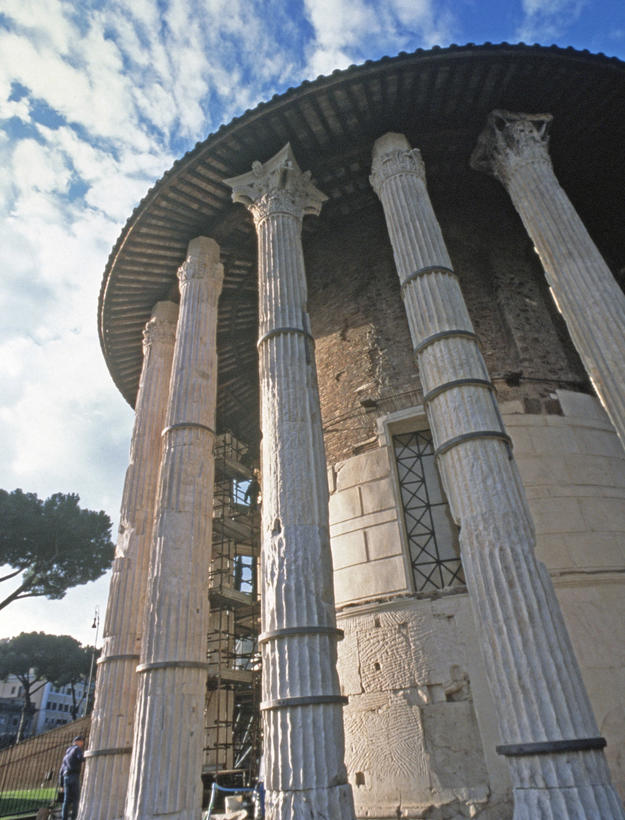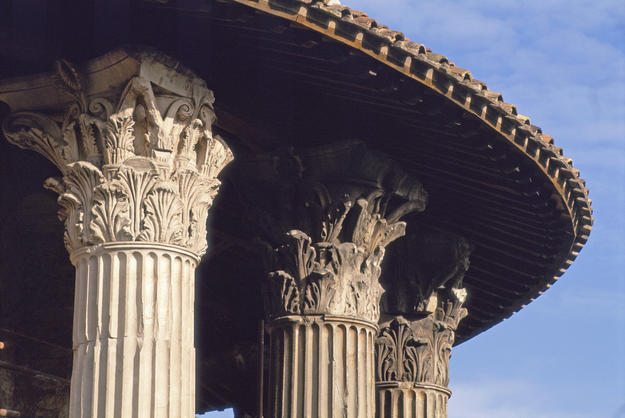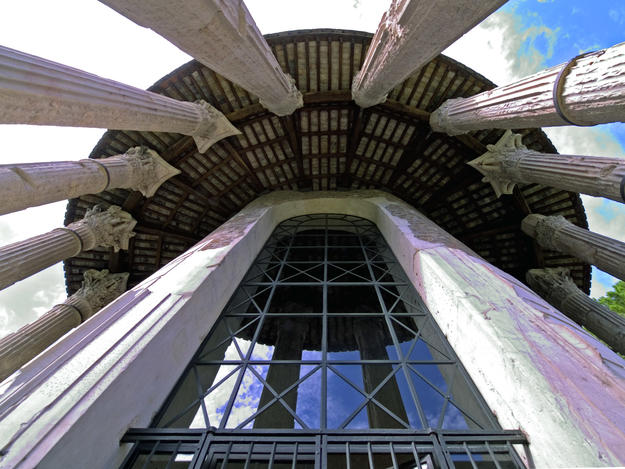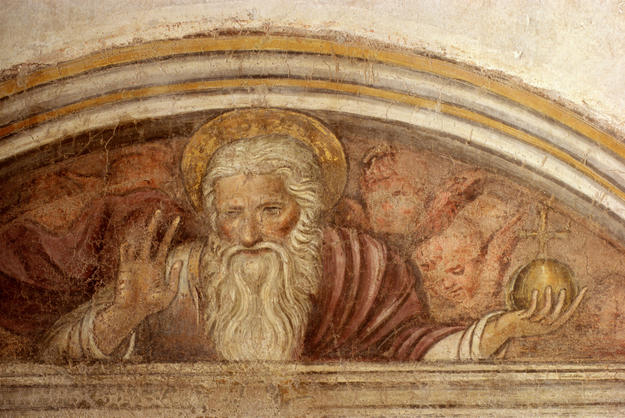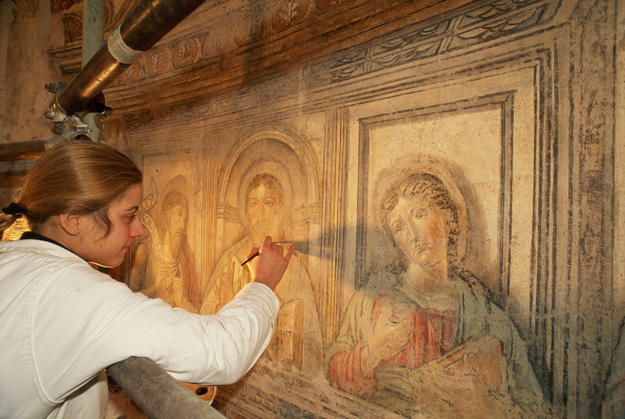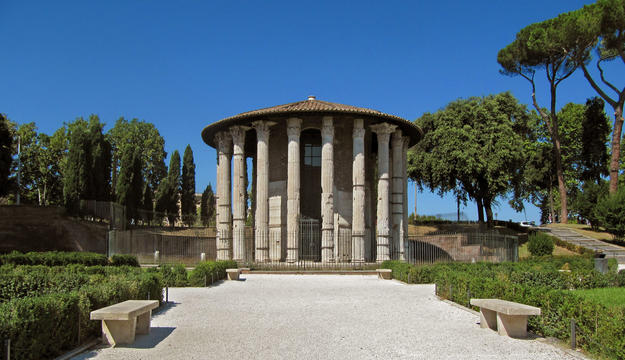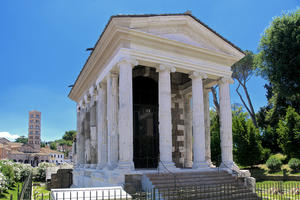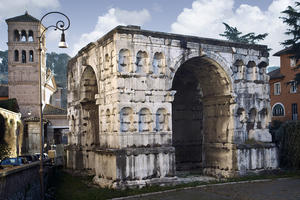Temple of Hercules
The Temple of Hercules is the only surviving sacred structure in ancient Rome that was made of Greek marble. Located in the Forum Boarium on the eastern bank of the Tiber, it is one of the oldest extant buildings in the city and is thought to be the work of the Greek architect Hermodoros of Salamina. In the eighteenth century this icon of the Roman urban landscape was memorialized by Giovanni Battista Piranesi in his famed monumental etchings. The temple is circular in layout with 20 Corinthian columns orbiting a central cylindrical stone block, and it is said to be the place where Hercules rested after his tenth labor. The building became affiliated with Christianity in 1140 when Innocent III converted it into a church dedicated to San Stefano. Its famed slender columns extend directly upwards, creating a lofty appearance. The fluted column shafts are topped by beautifully rendered Corinthian carvings, articulated acanthus leaves, carved stalks or cauliculi, and curling volutes which create a contrast between light and shadow.
Conservation work focused on securing the fragile structure’s stability
The marble components of the temple have endured considerable deterioration over two millennia. By the time the structure was included on the 1996 World Monuments Watch, its columns had tilted at a severe angle. There was substantial loss of material around the joints of the blocks that compose each column—especially along the marble’s natural veins—which greatly increased the risk of their movement or collapse. The tuff blocks of the podium, on which the temple’s fragile columns rest, had also undergone advanced erosion. Surfaces of the medieval frescoes in the interior had suffered notable deterioration as well.
Between 1996 and 1998 support from American Express enabled a comprehensive conservation program to be undertaken and completed at the site. The conservators focused on securing the structure’s stability and preempting geological threats to the site while conserving its eroding marble surfaces and rare Christian frescoes. Stainless steel and titanium elements were employed to anchor the new roof to the column capitals without endangering the original architecture. The tuff podium and pavement were returned to their original heights with new stonework, and then partially reburied to safeguard their stability. The marble and plaster sections of the interior walls and the fifteenth-century fresco above the altar were cleaned, consolidated, repaired, and treated.
World Monuments Fund's work at the Temple of Hercules has been made possible, in part, by support from American Express and The Robert W. Wilson Charitable Trust.

